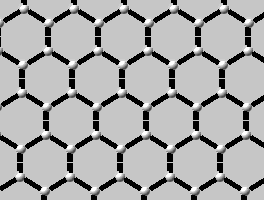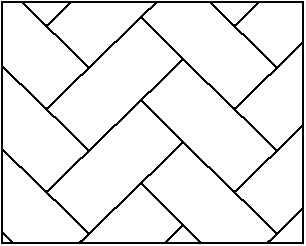

(Escher Web Sketch takes a while to load, so in the meantime
we
suggest that you read the documentation below)
Note: Painting using the images with rotation turned on may be unbearably slow on older computers. You may wish to uncheck the rotate box in the image painting controls.
Escher Web Sketch allows you to draw repeating patterns. You can select the symmetry of the patterns by clicking on one of the icons in the bar above the drawing area. The drawing tools are selected from the icon bar under the drawing area. The scroll bar(s) on the left will change the pattern size. The right hand side of the drawing area is reserved for each drawing tool's usage. Typically it changes the pen size and color.
Numerous web sites exist dealing with the work and biography of M.C: Escher. Only a very short selection is given here:
Crystallographers will recognize the list of 17 2D space groups (plane groups) characterized by their international symbol as described in International Tables of Crystallography (Vol. A):
After selecting one of the 17 plane groups, the user may choose an object (a colored circle for example) and move it around within the unit cell. In some specific positions, the object and some of its symmetry-generated equivalents may converge into a single point. This single point is called a special position. All the others are general positions.
It is also easy to see that the number of symmetry-equivalent points in each unit cell depends on the point's position. The number is largest for general positions and smaller on special positions. The number of symmetry-equivalent positions on special positions is always an integral fraction of the largest possible number.
This concept of general and special positions is important and is directly linked to the stoichiometry as expressed by the chemical formula of a crystalline sample.
Special positions have not only the property of reducing the number of equivalent points in a unit cell but also of increasing the symmetry of the object sitting on a special position. The interested reader may discover for himself the symmetry of the special positions.


Since 1987, many crystallographers and many other specialists enjoyed the attractive software written for the Macintosh by Terry Flaherty from Loyola University in New Orleans. Escher Sketch was originally created for the purpose of designing periodic decorations. It was soon realized however that this application was an excellent teaching tool for the illustration of basic crystallography courses. It was easy to select one of the 17 symmetry possibilities in two-dimensional space (the 17 two-dimensional space groups or plane groups) and use the symmetry operations to generate automatically 2D periodic pattern. With the various tools available, it was thus easy to generate all conceivable wall-paper (periodic) patterns.
In order to make such a program readily accessible to students and teachers of crystallography, and others interested in the art of periodic decorations, the current program has been developed in Java in order to be directly accessible on the World Wide Web (W3). In addition, the possibility of coloring the patterns has been introduced along with other tools to facilitate the creation of two-dimensional crystalline structures.
Send your comments to escher@www-sphys.unil.ch